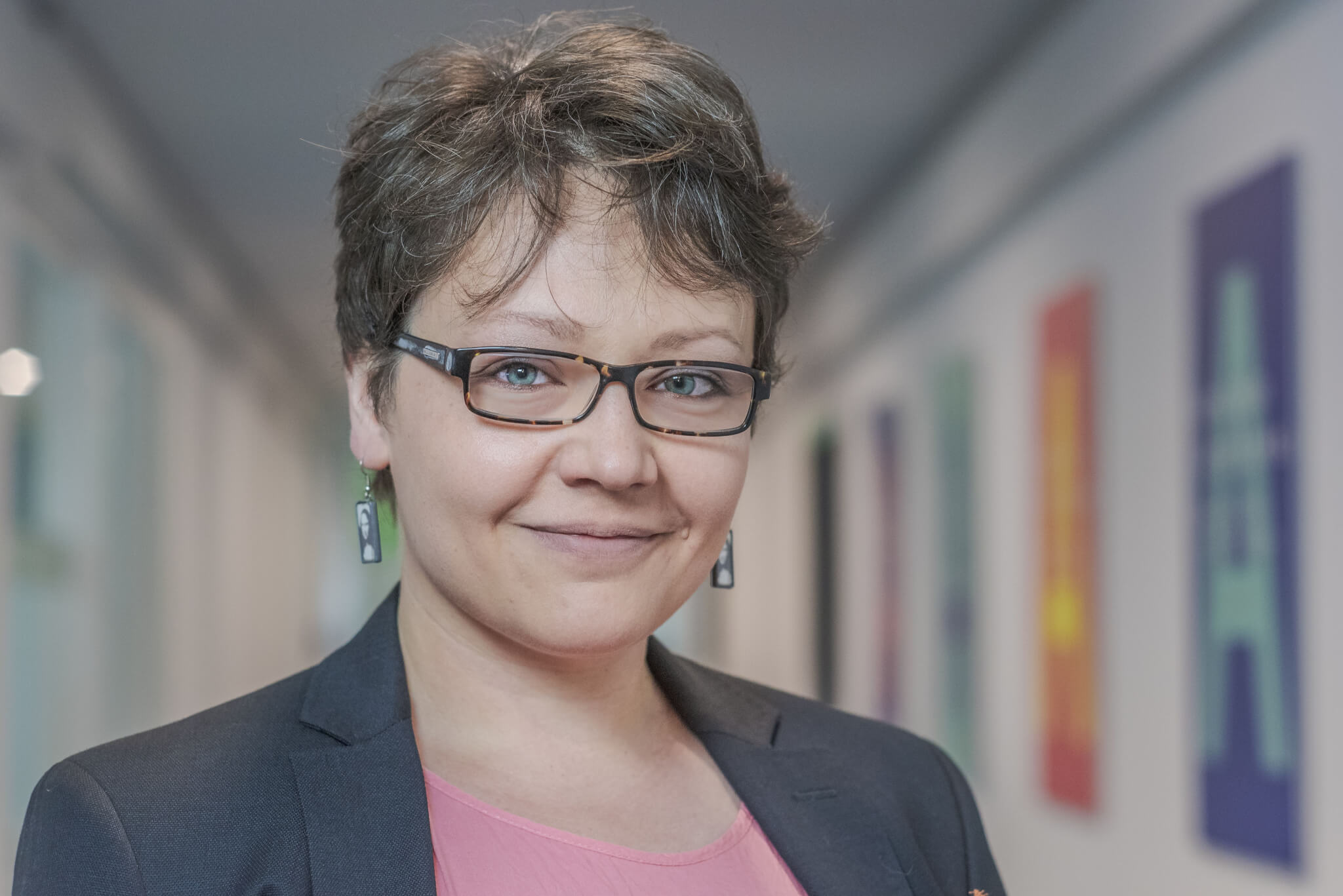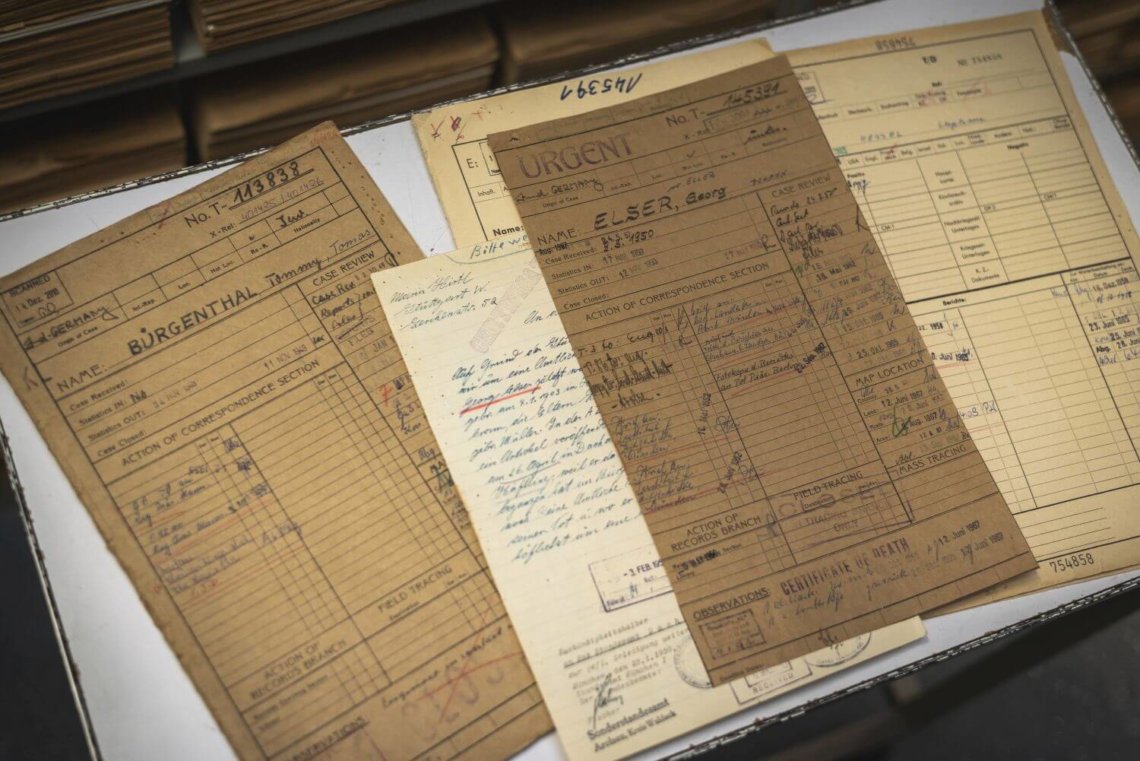Less paper –
More service
As Deputy Head of Tracing at the Arolsen Archives, Ramona Bräu has been instrumental in implementing a completely digital workflow for processing inquiries. The new workflow was introduced in 2018 and has brought two major improvements: faster responses for the people who submit inquiries as well as more clarity and a better overview for the people who process them.
What has the Tracing department been doing differently over the past year?
We switched to a digital workflow in 2018. This means that we no longer print out e-mails to file them and then send them on in folders complete with the full documentation for scanning again at the end. Instead, incoming mail, filing and outgoing mail do not involve any paper at all. This stops unnecessary duplication of effort.

»After we implemented the digital workflow in June, the average waiting time dropped from 11 months to eight months. We are expecting another significant reduction in this figure once the backlog has been cleared. The year 2018 marks a real turning point!«
Ramona Bräu, Deputy Head of Tracing
Do all inquiries arrive by e-mail?
Nearly all inquiries come to us electronically. We are also trying to draw more attention to our online form, which we introduced in 2016.
What advantages does the online form have over traditional e-mails?
It has a number of advantages. E-mail communication is rather diffuse, important details such as the date of birth or the name of the person who is the subject of an inquiry are often missing, for example. Thanks to the form, people now know exactly which data they need to give us when they make an inquiry. This saves us from having to contact them with queries and enables us to work according to a standard procedure. That was one of our aims: to reduce the historically very high number of outgoing e-mails sent by the Arolsen Archives. Queries are usually quite unnecessary now and we send out confirmations of receipt automatically.
But do all the inquiries you receive fit the same standard pattern?
Many of the people who submit an inquiry do not have any further questions; they are only interested in documents about a specific person. But we can, of course, respond and communicate on a more individual basis – if this is necessary and helpful.

T/D files (Tracing/Documentation) document the inquiries of the past seven decades.

It sounds as if the digital workflow was quite a big change for staff to cope with. Is that right?
Yes, it certainly was. For decades, paper was the standard medium, just as it was in other similar institutions. Many of our employees were attached to the paper-based workflow and, seeing as the average length of service with us is 25 years, it is not surprising that they felt comfortable with it. But all of them adapted very quickly to the changes. Probably because the new workflow brought a number of improvements which affected them directly: our work processes are clearer now. Instead of mountains of paper, we now have “work packages” which are easy to handle and simple to pass on to others when employees go on holiday or fall ill. Staff can also access them easily when working from home. In addition, priorities are now clearly defined.
Are you referring to the order in which inquiries are processed?
Yes, people with a family connection have top priority, of course. Inquiries which are connected with matters of inheritance or which involve the clarification of an individual’s nationality are given preferential treatment, as are inquiries from very old people. We can sometimes respond to these in a matter of days. One of the reasons for this is that we now use software to translate inquiries submitted in other languages.
A partnership with the University of Göttingen was launched during the switchover…
In the past, the documents we use for tracing existed in paper form only, which meant that they could only be viewed here in Bad Arolsen. The fact that everything is now digital opens up a whole new range of possibilities, including projects with external partners like our new project office in Göttingen. About six students are supporting us there. We are hoping that this will give us a helpful outside perspective on our work, of course, and perhaps even result in students writing their dissertations on our archive. We are already very happy with the way things are going.

Opening of the project office in Göttingen.

What further steps can you imagine taking in future?
I can imagine expanding the services we offer to provide communication which is more fluent, formats which are more user-friendly and processes which are more transparent. I think all of this is needed. I can imagine having a convenient upload area one day, for example, or a function which shows that an inquiry is currently running on a specific name and which displays the current status.

